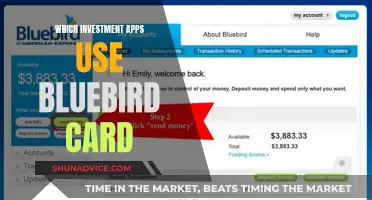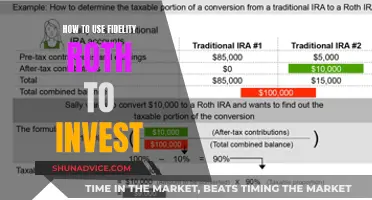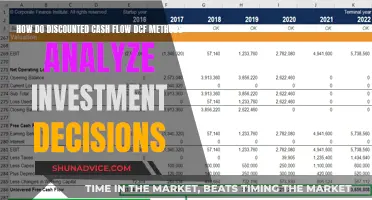
Investment-only variable annuities (IOVAs) are a specialised type of annuity designed primarily for investing. Unlike traditional annuities, which offer a guaranteed lifetime income, IOVAs focus on growing your investment portfolio. IOVAs are purchased from insurance companies or financial institutions and are structured as tax-deferred investment accounts, offering the potential for greater returns. This means that the income generated during retirement depends on the performance of the underlying investments, which can include stocks, bonds, and mutual funds. IOVAs offer tax advantages, diversification, and a means to supplement retirement savings, but it's important to understand the associated fees, complexities, and risks before investing.
| Characteristics | Values |
|---|---|
| Purpose | Investing |
| Income | Not guaranteed |
| Tax | Deferred |
| Income Tax | Ordinary income tax rates |
| Withdrawal Age | 59 1/2 |
| Withdrawal Penalty | 10% |
| Withdrawal Exceptions | Disability or death |
| Fees | M&E, Administrative, Subaccount, Surrender Charges |
| Investment Options | Stocks, bonds, mutual funds |
| Creditor Protection | Yes |
| Guaranteed Minimum Death Benefit | Yes |
| Probate Process | Not required |
What You'll Learn

IOVAs are purchased from insurance companies or financial institutions
IOVAs, or Investment-Only Variable Annuities, are initially purchased from an insurance company or a financial institution. IOVAs are designed as investment vehicles, not as guaranteed retirement income streams. They offer the potential for higher returns, but the income generated during retirement depends on the performance of the underlying investments. IOVAs provide a tax-deferred status for investments to grow, with taxes paid at the time of withdrawal. This can be beneficial for those expecting a lower tax rate in retirement.
Insurance companies and financial institutions, such as Securian Financial, offer IOVAs to their clients. For example, Securian Financial's MultiOption Momentum IOVA provides a combination of indexed and variable investment options. It allows investors to customise the product to meet their needs, with optional benefits available for an additional cost. MultiOption Momentum offers over 70 variable investment options, two indexed account options, and a guaranteed interest account option.
When purchasing an IOVA, it is essential to consider the fees and charges associated with the product. These may include mortality and expense fees, administrative fees, subaccount fees, and surrender charges for early withdrawals. These fees can impact the overall returns on your investment. It is also worth noting that IOVAs may have a "free look" period, typically lasting 10 to 30 days, during which investors can evaluate the contract without commitment and cancel without penalty if needed.
Before purchasing an IOVA, individuals should consult a financial advisor to ensure it aligns with their financial goals and understand the risks and complexities involved. IOVAs differ from traditional annuities in that they do not provide guaranteed lifetime income, and there may be restrictions on accessing funds due to surrender charges. Additionally, IOVAs are subject to market risk, and withdrawals are generally taxed as ordinary income.
Selling Investments on Cash App: A Step-by-Step Guide
You may want to see also

IOVAs are not guaranteed retirement income streams
IOVAs are a type of variable annuity, and their primary appeal lies in the magnification of income tax deferral through unique investment diversification opportunities. They offer a wide range of investment options, including conventional investment portfolios and alternative investments such as real estate, commodities, and hedge fund options. The diverse investment choices allow for the potential of significant gains, but also carry the risk of substantial losses.
The fees associated with IOVAs are typically much lower than those of other annuity types, which can promote more robust investment growth. Some IOVA products offer a flat monthly fee, and many have no surrender charges. This lack of surrender charges, however, is also a potential drawback, as it means that funds cannot be accessed without penalty before the client reaches the age of 59 1/2. This restriction may make IOVAs unsuitable for clients with limited funds to invest.
In summary, while IOVAs offer tax advantages and diverse investment opportunities, they do not provide a guaranteed income stream for retirement. The income generated depends on the performance of the underlying investments, and there are various fees and restrictions that can impact the overall returns.
Understanding E-Trade Cash Calls: What Investors Need to Know
You may want to see also

IOVAs offer a range of investment options
IOVAs are particularly attractive to investors who want to take advantage of the tax-deferral benefits of an annuity, but who are also interested in maximising their investment growth through a diverse range of investment options. The wide range of investment choices available with an IOVA allows investors to create a diversified portfolio that can offer downside protection through the use of hedging strategies.
The alternative investment options available through an IOVA are not usually widely available to average clients. This means that IOVAs can provide access to investment classes that are typically out of reach for many investors. For example, an investor could use an IOVA to invest in alternative assets like real estate or commodities without having to pay ordinary income taxes or short-term capital gains taxes, allowing their investment to grow without being reduced by taxes, potentially for years.
The range of investment options available with an IOVA means that investors can create a portfolio that is tailored to their specific needs and goals. This flexibility, combined with the tax-deferral benefits and low fees associated with IOVAs, makes them a compelling option for investors who want to maximise their investment growth over the long term.
Acorns: A Guide to Investing with Micro-Investments
You may want to see also

Earnings within an IOVA grow tax-deferred until withdrawal
For example, if your taxable income is $50,000 and you contribute $3,000 to a tax-deferred account, you will only pay tax on $47,000. If, in 30 years, your taxable income for a particular year is $40,000, and you decide to withdraw $4,000 from the account, your total taxable income will be $44,000.
The benefit of tax-deferred investments is that you can take advantage of tax savings when you are likely to be in a lower tax bracket in retirement. This can result in substantial tax savings, especially when compared to paying taxes on the earnings each year.
It's important to note that tax-deferred accounts, like traditional IRAs and 401(k)s, have rules and restrictions that must be followed. For example, there are contribution caps, penalties on early withdrawals, and required minimum distributions (RMDs) starting at a certain age.
By understanding the tax-deferred nature of IOVAs and the associated rules, investors can make informed decisions about their retirement savings and optimize their wealth-building potential.
How Cash App Investing Works for Beginners
You may want to see also

There are fees and charges associated with IOVAs
Mortality and Expense (M&E) Fees
IOVAs typically charge M&E fees to cover the insurance aspect of the annuity. These fees can reduce your investment profits.
Administrative Fees
Administrative fees are levied to manage your account and transactions. These fees can vary among different IOVA providers, so it's worth shopping around to find a competitive rate.
Subaccount Fees
IOVAs offer the opportunity to invest in subaccounts, similar to mutual funds. Each of these subaccounts may come with its own set of management fees, so be sure to review the fees associated with each subaccount before investing.
Surrender Charges
If you need to withdraw your funds early, you may be hit with surrender charges. These fees can be significant, so it's important to be aware of the potential cost of early withdrawals.
Deferred Sales Charges
Withdrawing funds early from your IOVA may also incur deferred sales charges. These charges are common with annuities and are essentially a penalty for early withdrawals.
Investment Management Fees
On top of M&E fees, you may also encounter investment management fees. These fees are specific to variable annuities and are charged for the management of the variable investment options within the IOVA.
Rider Fees
Rider fees are additional costs for optional benefits that you can add to your IOVA. These benefits may include things like a death benefit or a return of premium riders, and they come at an extra cost.
It's important to carefully review the fees and charges associated with any IOVA before making a decision. While IOVAs can offer attractive investment opportunities and tax advantages, the fees can add up and impact your overall returns. Be sure to weigh the benefits against the costs to determine if an IOVA is the right choice for your financial goals.
Transferring Cash to Fidelity Investments: A Step-by-Step Guide
You may want to see also
Frequently asked questions
An IOVA is a specialised type of annuity designed primarily for investing. Unlike traditional annuities, it is not focused on providing a guaranteed lifetime income but instead on growing your investment portfolio.
An IOVA is purchased from an insurance company or financial institution and acts as an investment vehicle. It offers the potential for greater returns but does not guarantee a stream of retirement income. Returns depend on the performance of the underlying investments.
IOVAs offer tax-deferred growth, diverse investment options, creditor protection, and a guaranteed minimum death benefit. This means potential for faster investment growth, protection from creditors, and a seamless transfer of assets to beneficiaries.
IOVAs can be complex, with high fees and a lack of liquidity. They are also susceptible to market risk and potential tax implications.
The "free look" period is a grace period that allows investors to evaluate an IOVA contract without commitment. It typically lasts 10-30 days, during which investors can review the terms, investment options, and fees. If you are unhappy with the IOVA, you can cancel the contract without penalty during this time.







